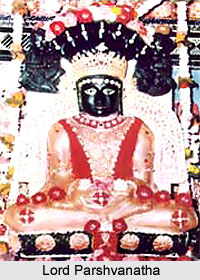 Shri Unhel Teerth located in Madhya Pradesh is a Jain pilgrimage centre. The teerth kshetra is situated It is in the Jain temple street in the Unhel village. It is dedicated to Lord Parshvanatha, the twenty-third Jain Tirthankara.
Shri Unhel Teerth located in Madhya Pradesh is a Jain pilgrimage centre. The teerth kshetra is situated It is in the Jain temple street in the Unhel village. It is dedicated to Lord Parshvanatha, the twenty-third Jain Tirthankara.
History of Shri Unhel Teerth
According to history Shri Unhel Teerth dates back to the ancient times. It is believed to belong to a period earlier that the tenth century. Ruins of temple of the Gupta Empire can also seen here. Previously this place was known as Toran but changed its name during the Muslim rule. Since the construction of the temple it has been repaired and renovated several times. The last renovation took place in the year 1700 of the Vikram Samvat Era at the revered hands of Shri Unhel Sanga. The kshetra is associated with many legends and miracles. It is said that on certain nights, musical sounds of songs can be heard. The idol of Lord Parshvanatha is believed to possess miraculous powers. Devotees from far off places visit the temple to offer their prayers. It is said that if the Lord is worshipped with full devotion it fulfils the desires of the pilgrims.
Temple of Shri Unhel Teerth
The temple of Shri Unhel Teerth houses the idol of Lord Chintamani Parshvanatha. The shrine has been marvellously decorated with striking intricate designs that infatuates the pilgrims. It reflects the artistic and creative skills of the craftsmen of the ancient period. The idol of the Lord is almost 105 cm in height and is black in colour. It is seated in a padmansana posture and is flaunted by the idols of Indra with a snake`s hood on its either side. The idol has been beautifully carved from a single stone and looks very fascinating. The smiling face of the Lord looks very calm and serene. The idol of Lord Chintamani Parshvanatha is believed to possess miraculous powers. Devotees from far off places visit the temple to offer their prayers. It is said that if the Lord is worshipped with full devotion it fulfils the desires of the devotees.
The Temple of Shri Unhel Teerth organises many annual gatherings and functions. There are provisions for dharamshalas or rest houses for the pilgrims. These are well equipped with all modern facilities. The temple is enclosed by scenic beauty that mesmerises and fascinates the pilgrims. The temple is bordered by large lakes that supply drinking water to the city. In the vicinity of the temple there are small and big hillocks of red earth which are known as red hills. Thus the calm and tranquil environment and the surrounding greenery make it a suitable place for religious activities. The kshetra is well connected to road, rail and air. Taxi services and bus services are easily available here. Unhel is the nearest railway station located at a distance of 10 kilometers and Ujjain is at a distance of 40 kilometres from this temple.




















